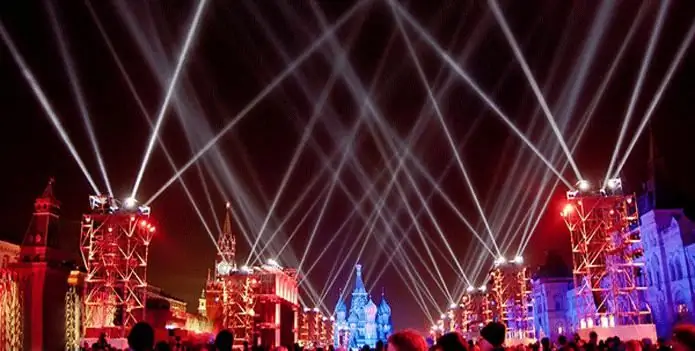- Author Harold Hamphrey [email protected].
- Public 2023-12-17 10:06.
- Last modified 2025-01-24 11:10.
The circle metro line in the capital is familiar to everyone who has visited Moscow at least once. The metro is the easiest and most popular way to get to the desired address in the capital. At the same time, using the subway, it is almost impossible to avoid any of the stations of the Circle Line. After all, it connects almost all railway stations and metro lines directly, and each of its stations can be used by passengers to switch to other lines they need.
From the history of appearance
There are two versions of how the Circle Line appeared. According to the first of them, it was originally planned to arrange underground not a “ring”, but several diametrical lines. But such an idea was abandoned after the launch of the second stage of the subway. It turned out that the implementation of the "diametrical" project, the load of passenger traffic will be excessively high. Accordingly, something else is needed, that is - the Circle Linesubway.
Another version of the appearance of the "ring" claims that the plans for its construction were present in the original project. According to this theory, which explains how the Circle Line of the metro appeared, already during the construction of Smolenskaya, which was open to passengers in 1935, branches for interchanges were laid.
When did this line appear?
Marked in concise brown on the diagrams, the "ring" line has become the fifth branch of the Moscow subway. Its first sections were launched in 1950, and the project was fully completed only in 1988. It was then that a transition was opened at Novoslobodskaya to the neighboring Mendeleevskaya station.
The circle metro line of the first stage, that is, its section, opened in the 50th year of the past century, connected the stations:
- "October", then it was called "Kaluga"
- "Dobryninskaya", in the middle of the last century it was called "Serpukhovskaya";
- "Paveletskaya";
- "Taganskaya".
That is, the line covered the southern part of the Garden Ring, but only underground. The second phase of construction was completed in 1952. After its opening, the "ring" was joined by:
- "Komsomolskaya";
- "Prospect Mira";
- "Novoslobodskaya";
- "Belarusian".
The third phase of construction that closed the "ring" was completed in 1954. She passed through "Kievskaya" and "Krasnopresnenskaya". On Krasnaya Presnya at the same time wereequipped and technical compartments, a separate depot.

At the time of the announcement of the completion of construction, in fact, it was not completed. "Novoslobodskaya" station did not have interchanges in those years, they were present only on the plans. That is, although the year of completion of the construction of the fifth brown line is considered the 54th, in fact, the work was completed decades later.
Which stations are on this line?
Metro stations of the Circle Line are made in the same architectural style. On the one hand, they represent an integral ensemble, on the other hand, each has its own theme. Of course, the style in which the lobbies, platforms, and passages were decorated was the “Stalinist Empire style” that was dominant at that time.
The "ring" includes:
- "Kyiv";
- "Culture Park";
- "October";
- "Dobryninskaya";
- "Paveletskaya";
- "Taganskaya";
- "Kurskaya";
- "Komsomolskaya";
- "Prospect Mira";
- "Novoslobodskaya";
- "Belarusian";
- "Krasnopresnenskaya".

Unfortunately, in the modern subway you can no longer see the former splendor, it remains only in old photographs. Now most of the old stations have only fragmentary remnants of what once adorned them.






